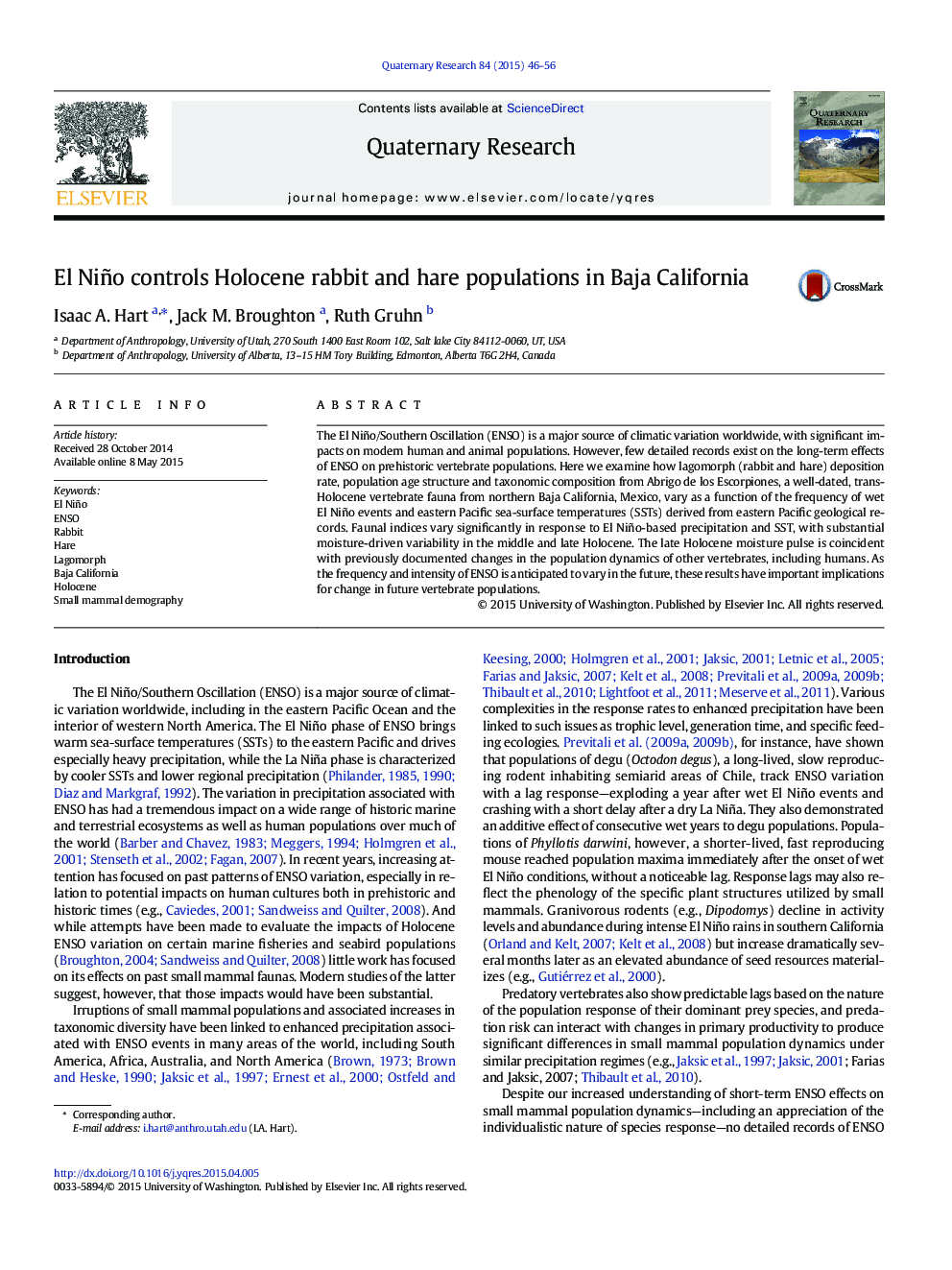| Article ID | Journal | Published Year | Pages | File Type |
|---|---|---|---|---|
| 1045128 | Quaternary Research | 2015 | 11 Pages |
Abstract
The El Niño/Southern Oscillation (ENSO) is a major source of climatic variation worldwide, with significant impacts on modern human and animal populations. However, few detailed records exist on the long-term effects of ENSO on prehistoric vertebrate populations. Here we examine how lagomorph (rabbit and hare) deposition rate, population age structure and taxonomic composition from Abrigo de los Escorpiones, a well-dated, trans-Holocene vertebrate fauna from northern Baja California, Mexico, vary as a function of the frequency of wet El Niño events and eastern Pacific sea-surface temperatures (SSTs) derived from eastern Pacific geological records. Faunal indices vary significantly in response to El Niño-based precipitation and SST, with substantial moisture-driven variability in the middle and late Holocene. The late Holocene moisture pulse is coincident with previously documented changes in the population dynamics of other vertebrates, including humans. As the frequency and intensity of ENSO is anticipated to vary in the future, these results have important implications for change in future vertebrate populations.
Related Topics
Physical Sciences and Engineering
Earth and Planetary Sciences
Geology
Authors
Isaac A. Hart, Jack M. Broughton, Ruth Gruhn,
